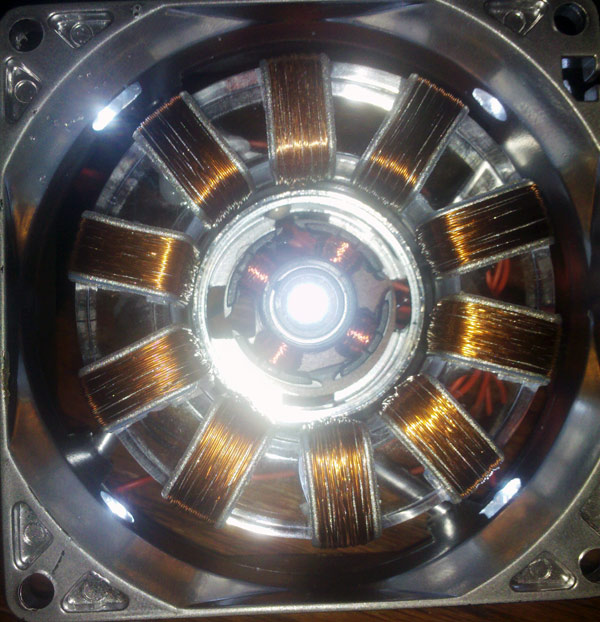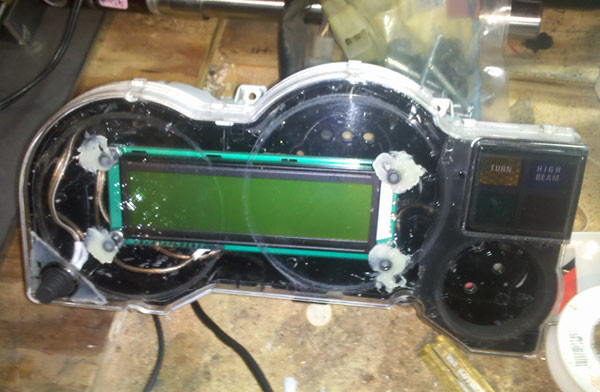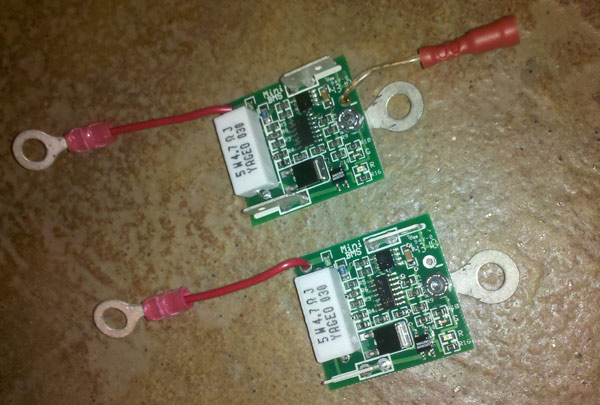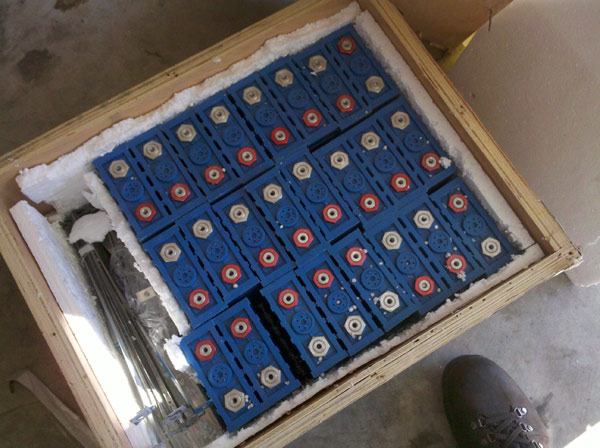The Build - Page 2

There was a lull of several months in the build process while I waited for the batteries to arrive from their factory in China. During this time I worked on the final bracket design, as well as smaller components of the bike, waiting until the batteries arrived to verify dimensions and start fabrication. This is one of the extra features. What better source of clean energy is there than an Ironman Arc Reactor? Originally designed just for show, the arc reactor actually serves a purpose, it lights up to show the status of the battery management systems' control over the charger.

I removed all of the analog gauges from the dashboard, replacing them with a Cycle Analyst, a multi-function computer for electric bikes and motorcycles. In addition to providing speed and odometer functions, monitors total pack voltage, amps being drawn from the battery pack, providing not only realtime data, but efficiency statistics and logs of lifetime battery use. The Cycle Analyst's single control button fit nicely under the rubber boot normally used for odometer reset. I replaceed the indicator bulbs with LEDs, using the original amber light for turn signals, and blue for high-beam. The red oil warning now lights on battery alerts (high or low voltage limits) and the green neutral indicator is now the status indicator for the motor controller (on when it's on, and blink codes for errors).

Lithium Iron Phosphate batteries can be damaged permanently if they are overcharged, or over-discharged. Since they are wired in series to attain the necessary voltage, checking the main voltmeter only points to the average voltage of each cell. If one cell is weaker than the rest, it could be charged earlier, or run out of juice faster. The only way to know is to monitor each cell. That's what these MiniBMS modules from Clean Power Auto do.
Additionally each board has a shunt resistor, so that as a single cell approaches 100% charge, it starts charging at a slower rate. This allows the rest of the cells to keep charging at the normal rate and "catch up" to the nearly full cell, balancing the individual cell charges to allow for maximum energy storage in the pack without taking a single cell past its limits. After checking with their designer, I also added plugs to each board (upper right). These connect to custom built wiring harnesses that allow my to plug in Cell-Log8 8-input volt meters to check the voltage of individual cells for troubleshooting and diagnosis without having to tear the bike apart.
There are several different approaches that can be taken to battery balancing and protection, including manually balancing the packs at the top or bottom of the charge, precision cell matching (very expensive to do) and simply under-charging and under-using the batteries. I really like the management approach taken by the MiniBMS, the failsafe design philosophy and its reasonable price tag compared to other BMS systems.

After what seemed like forever (especially after hearing stories about people pre-paying for batteries only to have their US dealer receive them, sell them to someone else and file for bankruptcy) the China Aviation Lithium Battery (CALB) batteries arrived, just after Christmas!
Continue to Build Page 3...
